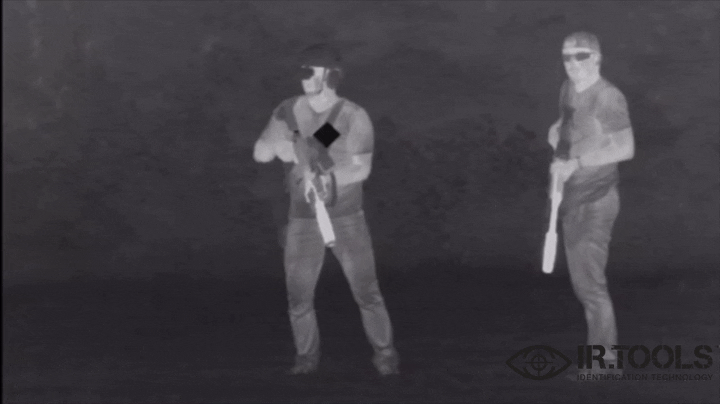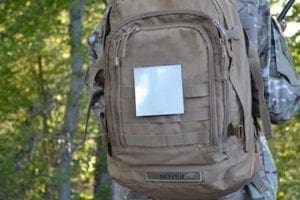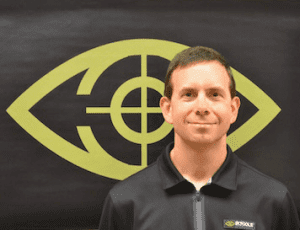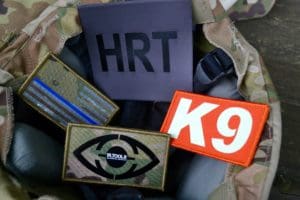For Starters…What is Thermal ?
The simple definition?
Thermal is “something related to heat or temperature”.
Perhaps, this definition will take you back to your 8th grade science class when you first learned thermal is part of the electromagnetic spectrum.
The electromagnetic spectrum is the term used by scientists to describe the entire range of energy that exists.
Most energy is invisible to the naked eye. For instance, microwaves, radio waves, ultraviolet, and X-ray are examples of such energy.
In short, thermal (heat) is a form of energy that is invisible to your eyes.
But thanks to advanced imaging technology (fancy cameras), “invisible” heat energy is now visible! Night vision devices enables you to see near infrared energy. And thermal imagers (FLIR) enables you to see mid and far infrared (heat) energy. Very cool! See chart below.

How Thermal Film Maximizes Results
First, you need to understand how a thermal imager transfers the scene to your eye. Regardless of the time of day, your camera will present a contrast of color with little to no detail. You will see people, animals, cars, trees, buildings, roads, etc. But you will find it difficult to distinguish your subjects from one another. Think about looking at a black and white TV show without the details of the faces or clothes.
Here is why thermal film is so important.
By attaching a thermal film marker to a person, animal, or vehicle, you will know who is who. The thermal camera reflects the IR energy off the marker and creates contrast. Immediately, your eye determines who is who and where they are in the scene.
Imagine how this bolsters your communication!
Here are a few other proven applications for thermal markers:
- Identify soldiers and officers for friendly fire protection
- Ambush prevention
- Pinpoint landing zones
- UAV surveillance mapping
As infrared technology continues to accelerate in every industry, the diversity and range of applications for thermal film markers, patches, and targets will continue to expand right along with it.
Pictures below demonstrate thermal markers on an officer, building and car. The thermal patch on the officers chest indicates he is on your side. The numbers on the roof top and vehicle clearly ID location and help on the ground.



.
Additional Benefits
- Thermal film is effective 24/7. Day or night, the film identifies who is who and where they are.
- Where or when a thermal imager is on hand, an application for thermal film is likely. It is excellent for your covert operations, search and rescue, specifying landing zones, target training, and other applications.
- Eliminates confusion in city lights. Your night operations in bright areas is extremely difficult. Thermal film gives your operation a strategic advantage.
- No batteries or electric needed! Mother Nature is all the power you need!
The Challenges
While the benefits of thermal film is well worth the investment, there are some challenges to keep in mind.
First of all, the film is visible in sandstorms, smoke, fog, dark, and rain. But water on the film will create a barrier. Operators will need to wipe the water off. Water will not damage the film but for a time it is less visible.
The film does scratch. While the scratches are not cosmetically appealing they will not hinder the markers effectiveness at all.
The other challenge is cost. The cost per square inch is in line with night vision IR films. But the amount of thermal film for equal detection is 2X – 10X greater.
Can You Trust Thermal Film?
Yes you can!
The Military has confidently been implementing thermal film for 25 years. They introduced the film in 1990 for Operation Desert Storm. And continue to use markers and panels to protect military vehicles. They are attached to the tanks, humvees etc… to protect against friendly casualties.

Unfortunately, with the uptick of NVG’s in the hands of the enemy, the military is trusting the film as a viable alternative for personal ID protection.
Thermal patches for personal ID, in some units, are becoming part of the required tactical gear.
Thermal Film is Making a Difference
While you may want to study the science behind infrared technology, one thing is for certain, thermal film is not the new kid in the class anymore.
Proven results in Military and Law Enforcement applications are moving the film quickly to the head of the class. The US Secret Service boasted of their results:
“The thermal letters impressed the bosses during the United Nations event. The helicopters could identify which country’s motorcade was which.”
High five!
Now what?
If your unit is using a FLIR device, your operations will get a serious boost by implementing thermal film along side it.
We suggest you take some time to evaluate the advantages and challenges of the film and how your application will benefit.
I am here to help, so don’t hesitate to give me a call or schedule an appointment.
Tom Boyer: 292-443-8885 or tboyer@ir.tools.
Browse the Thermal Products available from IR.Tools™
Vehicle ID
Training Targets
Rolls and Tape

Since 2006, Tom has been the driving force behind IR.Tools, dedicated to delivering top-notch infrared solutions to the military, law enforcement, and sportsmen communities.
What began with a single infrared patch has blossomed into a comprehensive store featuring hundreds of IFF patches, vehicle IFF, an extensive suite of thermal training targets, and tools for drone pilots.
Beyond his innovative products, Tom is passionate about educating users on infrared technology and showcasing how advancements in IR can enhance their operations.
Tom holds an MS in Mechanical Engineering from the University of Maryland and an MBA from Regents University.

